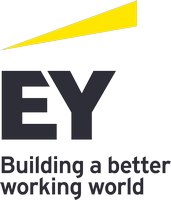EY refers to the global organization, and may refer to one or more, of the member firms of Ernst & Young Global Limited, each of which is a separate legal entity. Ernst & Young Global Limited, a UK company limited by guarantee, does not provide services to clients.
How EY can help
-
Our working capital advisory team helps businesses secure liquidity and manage working capital in response to the pandemic. Read more.
Read more
Other critical factors in a successful cash culture transformation include cross-functional accountability, cash objectives integrated with other business priorities and baseline metrics. The goal is sustainable change so that, when the program sunsets, the CLO has been an evangelist to business operations, but not a crutch. Wysong offered four strategies from JCI’s journey that were critical in setting up a CLO and establishing a cash culture:
- C-suite participation will be critical. The CLO leader should report to the CFO or CEO and provide regular updates. “Having a direct report is important versus being buried in Treasury or somewhere else. And the tone at the top is so critical to success on cash.”
- The CLO leader can be a company veteran with a network, internal knowledge and broad influence. “There is no way we could have pulled it off by hiring someone from the outside.”
- You will need to have many arms and legs, because there is a lot of heavy lifting: presidents, general managers, salespeople, collections, materials, tax and others, globally. “Everyone should think the balance sheet is important.”
- Set up a good cash forecasting process. “Most can do well with revenue and EBIT but forecasting changes in cash from one period to another is difficult.”
In total, it took JCI two and a half years to instill a culture, and roughly one-third of the cash production came from accounts payable. The last year, Wysong said, focused on business-unit ownership and process maintenance, including forecasting and extracting tools that create a true north star in what otherwise can be a sea of data. Training and awareness are vital.
Conclusion
JCI took a hard look at its expansive business and decided to “go all in” on creating a systemic cash culture. Other businesses may employ a more targeted approach, but, regardless of the strategy, imbuing a company with a strong cash culture can create liquidity needed to invest in growth. Cash is still king.




